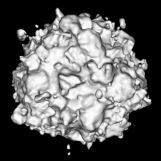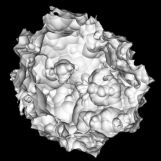Ray Casting Implicit Procedural Noise Functions
with Reduced Affine Arithmetic
Manuel N. Gamito
Steve C. Maddock
The University of Sheffield
A method for ray casting implicit surfaces, defined with procedural
noise functions, is presented. The method is robust in that it is able
to guarantee correct intersections at all image pixels. This robustness
comes from the use of an affine arithmetic representation for the
quantity that expresses the variation of the implicit function along a
ray. Affine arithmetic provides a bounding interval estimate which is
tighter than the interval estimates returned by conventional interval
arithmetic. Our ray casting method is also efficient due to a previously
proposed modification in the data structure used to hold affine
arithmetic quantities. This modified data structure ultimately leads to a
reduced affine arithmetic model. We show that such a reduced affine
arithmetic model is able to retain all the tight estimation capabilities
of standard affine arithmetic, in the context of ray casting implicit
procedural noise functions, while being faster to compute and more
efficient to store. We also show that, without this reduced model,
affine arithmetic would not have any advantage over the more
conventional interval arithmetic for ray casting the class of implicit
procedural surfaces that we are interested in visualising.
This paper was initially written as a technical report
CS-05-04
for the Department of Computer Science, The University of Sheffield.
The paper underwent a major rewrite to increase its clarity and has been
accepted for publication in The Visual Computer. The final paper is available at www.springerlink.com. A draft version of the paper is available below. Important Notice:
An error was made in Section 4.2 of the paper. Thanks go to Aaron Knoll
for finding this out. The correction has been inserted in the draft
paper made available here.
PDF format (218 K) (raycastvisual.pdf)
Some Animations from the Paper
Here are the animations of the three basic procedural noise functions
that are mentioned in the paper. All animations use three layers of the
same noise superimposed over a spherical seed surface. The animations
can be visualised as an infinite cycle by turning on looping in the
movie viewer.


